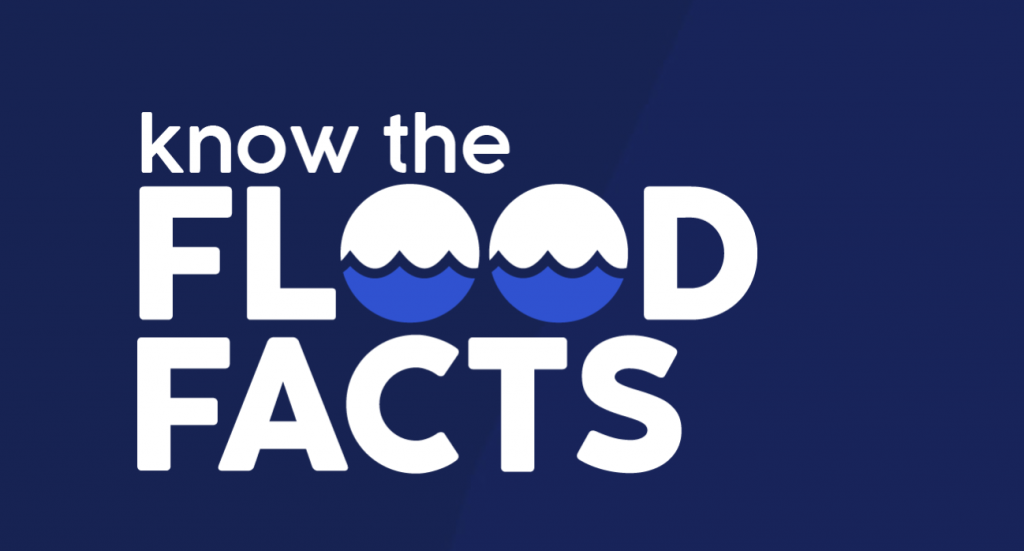NFIP – National Flood Insurance Program
Click below for some important flood facts
Click below to go to the official site of the National Flood Insurance Program
Flooding is a natural phenomenon. Periodically, rain and melting snow cause rivers to rise and streams and lakes to overflow their banks onto adjacent land. Floods have carved these areas, known as floodplains, out for the specific purpose of carrying excess floodwaters.
How did we get here?
As settlements and communities formed, little regard was given to the purpose and function of floodplains. Homes, businesses, and even whole communities have been built in floodplain areas. The development of these floodplains has resulted in continual and oftentimes severe social and economical loss.
Traditionally, planning for flood control has focused on protecting existing development(s) through structural works such as dams, diversions, or levees, and providing emergency relief and recovery assistance to flood victims following a disaster.
These approaches are expensive, and have been totally effective in reducing flood damages. Despite considerable expenditure on flood control works, annual damages due to flooding continue to rise. It is apparent that another alternative is needed, one that gets to the root of the problem: man’s insistence to use and occupy flood hazard areas.
There’s a system to help you recover from flood damage
The National Flood Insurance Program (NFIP) provides that alternative. This law recognizes and encourages the need to control development in floodplains and to protect people from harm by relocating people and not floodwaters. It does not prohibit, but guide development in floodplain areas, balancing nature’s needs to convey floodwaters, and a community’s land use needs. Congress created NFIP in 1968, offering nonstructural approaches to reduce flood damage. The program makes flood insurance available to property owners in flood – prone communities. In return each community agrees to guide future floodplain development. It requires local governments to adopt and enforce floodplain regulations, meeting federal requirements, before flood insurance can be obtained in their community.
Floodplain management is the operation of a community program of corrective and preventative measures for reducing flood damage. These measures take a variety of forms and generally include zoning, subdivision, or building requirements, and special – purpose floodplain ordinances.
Prior to the creation of the NFIP, floodplain management as a practice was not well established, only a few states and several hundred communities actually regulated floodplain development. For many communities, the NFIP was the community’s initial exposure to land use planning and community regulations.
A community’s agreement to adopt and enforce floodplain management ordinances, particularly with respect to new construction is an important element in making flood insurance available to home and business owners. Currently over 186 communities in Utah (view the Community Status List) voluntarily adopt and enforce local floodplain management ordinances that provide flood loss reduction building standards for new and existing development. There are 600-plus flood map panels for Utah. For more information on the NFIP, please contact Tracie Harrison at tjharrison@utah.gov.
Click on a link below for more information about floodplain management, insurance and flood risk
Information about the NFIP and floodplain management
- FEMA National Flood Insurance Program (NFIP)
- Official site of the National Flood Insurance Program
- NFIP – Quick Guide: The Quick Guide is a tool for community officials to understand the basics of the National Flood Insurance Program (NFIP) regulations. When communities participate in the NFIP, they are required to regulate development in the mapped 100 – year floodplain. This Quick Guide can be a reference tool for a community to better understand the requirements and remain in compliance with their Flood Loss Prevention Ordinance with the Federal Emergency Management Agency.
- FEMA NFIP Desk Reference for flood insurance commissioners and agents
- NFIP Frequently Asked Questions
- FEMA Floodplain Management
- Flood Forms and Documents for the NFIP
- FEMA Building Science and Resource Library. hazard-specific guidance that focuses on creating hazard-resistant communities.
Information about flood maps
- FEMA Flood Map Portal find out if a specific address is in a floodplain
- Flood Hazard Mapping in Utah all about floodplain mapping in Utah
Information for property owners
- Floodsmart community resources
- Floods: What you should know when living in Utah
- Reduce your risk from flooding
- Be Ready Utah Utah’s disaster preparedness site
Floodplain management organizations

